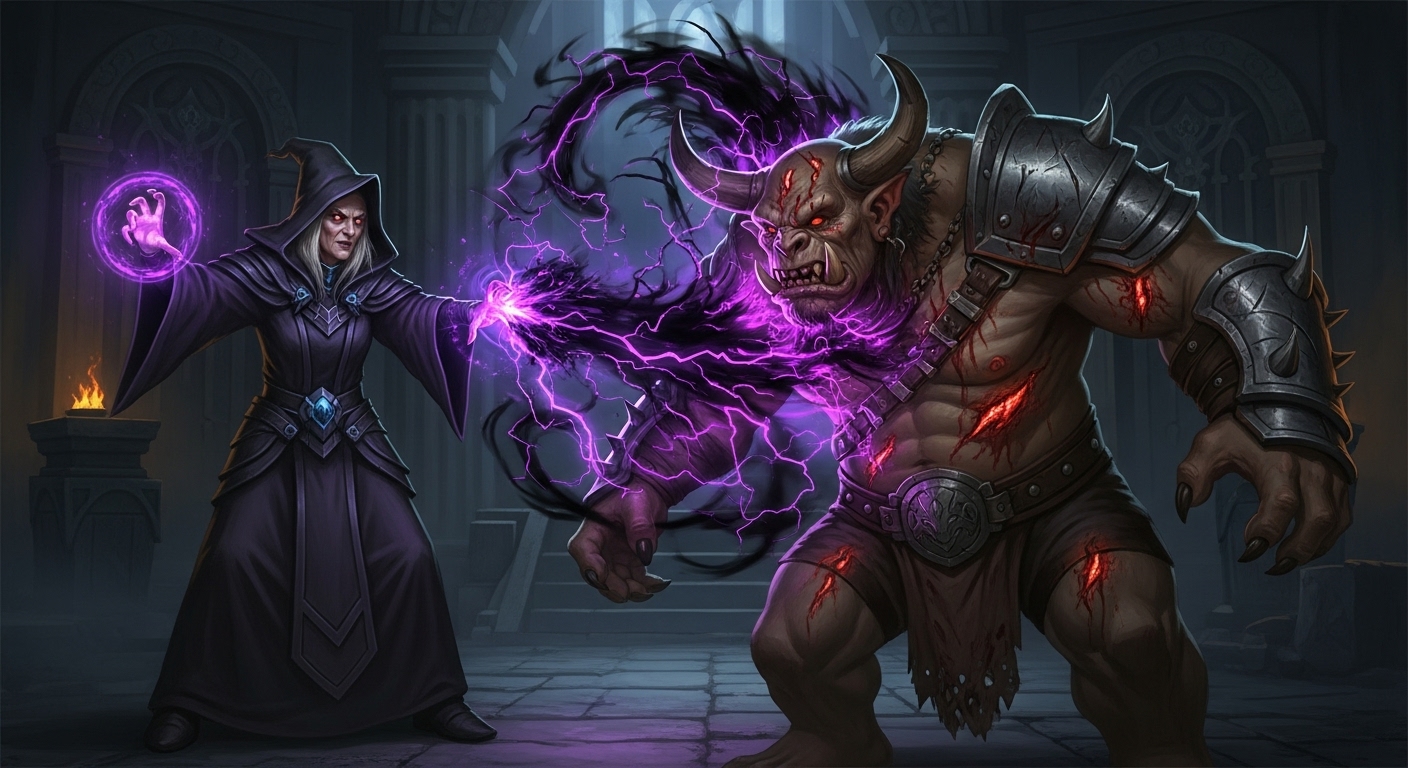Inflict Wounds

- Level: 1
- School: Necromancy
- Class: Cleric
- Casting Time: Action
- Range: Touch
- Components: V, S
- Duration: Instantaneous
A creature you touch makes a Constitution saving throw, taking 2d10 Necrotic damage on a failed save or half as much damage on a successful one.
Using a Higher-Level Spell Slot. The damage increases by 1d10 for each spell slot level above 1.
Tactical Usage
High Single-Target Damage: Inflict Wounds provides exceptional single-target damage at 1st level with 2d10 necrotic damage. The high damage potential makes it competitive with higher-level damage spells for spell slot efficiency.
Touch Range Considerations: The touch range requires positioning in melee range, creating risk/reward decisions. Use when tactical positioning allows safe approach or when already engaged in close combat.
Constitution Save Targeting: Many heavily armored enemies have lower Constitution saves than AC, making Inflict Wounds potentially more reliable than attack-based damage spells against certain target types.
Spell Combinations
Sanctuary Setup: Cast Sanctuary before approaching for Inflict Wounds to protect against opportunity attacks during positioning. The defensive spell allows safer touch range engagement.
Spiritual Weapon Synergy: Use Spiritual Weapon to threaten enemies while positioning for Inflict Wounds. The bonus action weapon provides consistent damage pressure while you maneuver for touch attacks.
Hold Person Combo: Against paralyzed humanoids, Inflict Wounds automatically hits and deals critical damage due to the paralyzed condition, creating devastating damage combinations.
Material Component Details
Component-Free Casting: Inflict Wounds requires only verbal and somatic components, making it highly reliable regardless of equipment status or material component availability.
Somatic Gestures: The somatic component typically involves placing hands on the target in a manner that channels negative energy. This creates dramatic moments of physical contact during spellcasting.
Verbal Invocation: The verbal component likely involves prayers or invocations to sources of negative energy, creating thematic connections to the cleric's divine relationship.
Creator Notes
Necrotic Damage Considerations: Many undead creatures resist or are immune to necrotic damage, reducing the spell's effectiveness against common undead threats that clerics often face.
Evil Cleric Flavor: While available to all clerics, Inflict Wounds fits thematically with death domain clerics or those serving darker deities. Consider alignment and deity restrictions based on campaign tone.
Touch Attack Risks: The touch range creates vulnerability during casting, especially against creatures with dangerous melee abilities, counterattacks, or environmental hazards.
Environmental Interactions
Positive Energy Planes: In areas suffused with positive energy, Inflict Wounds might be weakened or countered by environmental effects that oppose negative energy manipulation.
Undead Concentration: Areas with many undead might enhance necrotic magic or provide environmental synergy with negative energy manipulation and life-draining effects.
Sacred Ground: Consecrated areas might oppose the spell's negative energy, potentially reducing effectiveness or creating conflicting magical energies during casting.
Common Rulings & Clarifications
Save for Half: Unlike many touch spells that automatically hit, Inflict Wounds allows a Constitution save for half damage, making it more reliable than attack rolls but less guaranteed than automatic effects.
Critical Hit Interaction: When cast on paralyzed or unconscious creatures, the spell doesn't make attack rolls so critical hit rules don't apply despite the advantageous positioning.
Undead Immunity: Many undead are immune to necrotic damage, making the spell useless against a significant category of enemies that clerics frequently encounter.
Alternative Applications
Mercy Killing: In situations where ending suffering is appropriate, Inflict Wounds provides a direct method for quickly ending the life of dying creatures or those beyond healing.
Intimidation Display: The dramatic effect of channeling negative energy can serve intimidation purposes in social encounters, demonstrating the cleric's connection to life and death forces.
Interrogation Pressure: While not lethal at low levels, the significant pain and damage can create psychological pressure during questioning, though ethical considerations apply.
Related Spells
Cure Wounds: The healing counterpart with identical mechanics but positive energy. Many clerics prepare both to provide flexibility in supporting allies or harming enemies.
Guiding Bolt: Ranged alternative with radiant damage and beneficial side effects. Choose based on whether positioning allows touch range or requires ranged engagement.
Sacred Flame: Different approach with Dexterity saves and radiant damage that bypasses cover. Compare based on expected enemy saves and damage type preferences.
Scaling Analysis
Early Levels (1-4): Inflict Wounds provides excellent damage efficiency when spell slots are precious and the high damage potential can significantly impact encounters.
Mid Levels (5-10): Upcast versions scale well with additional d10s, though competition from higher-level spells and positioning risks reduce relative effectiveness.
High Levels (11+): While base damage becomes less significant, upcast versions can still provide substantial single-target damage when positioning allows safe touch range engagement.
Narrative Flavor
Negative Energy Channeling: Dark energy flows through your hands as you touch your target, carrying the chill of the grave and the weight of entropy. Life force drains away under your touch as negative energy floods their system.
Physical Manifestation: The target's skin grows pale and cold where you touch them, with dark veins briefly visible as necrotic energy courses through their body. They gasp as vitality drains away through your supernatural connection.
Divine Connection: The spell connects you momentarily to forces of death and decay, channeling power from your deity's dominion over life's ending. The touch becomes a conduit for divine judgment and supernatural harm.